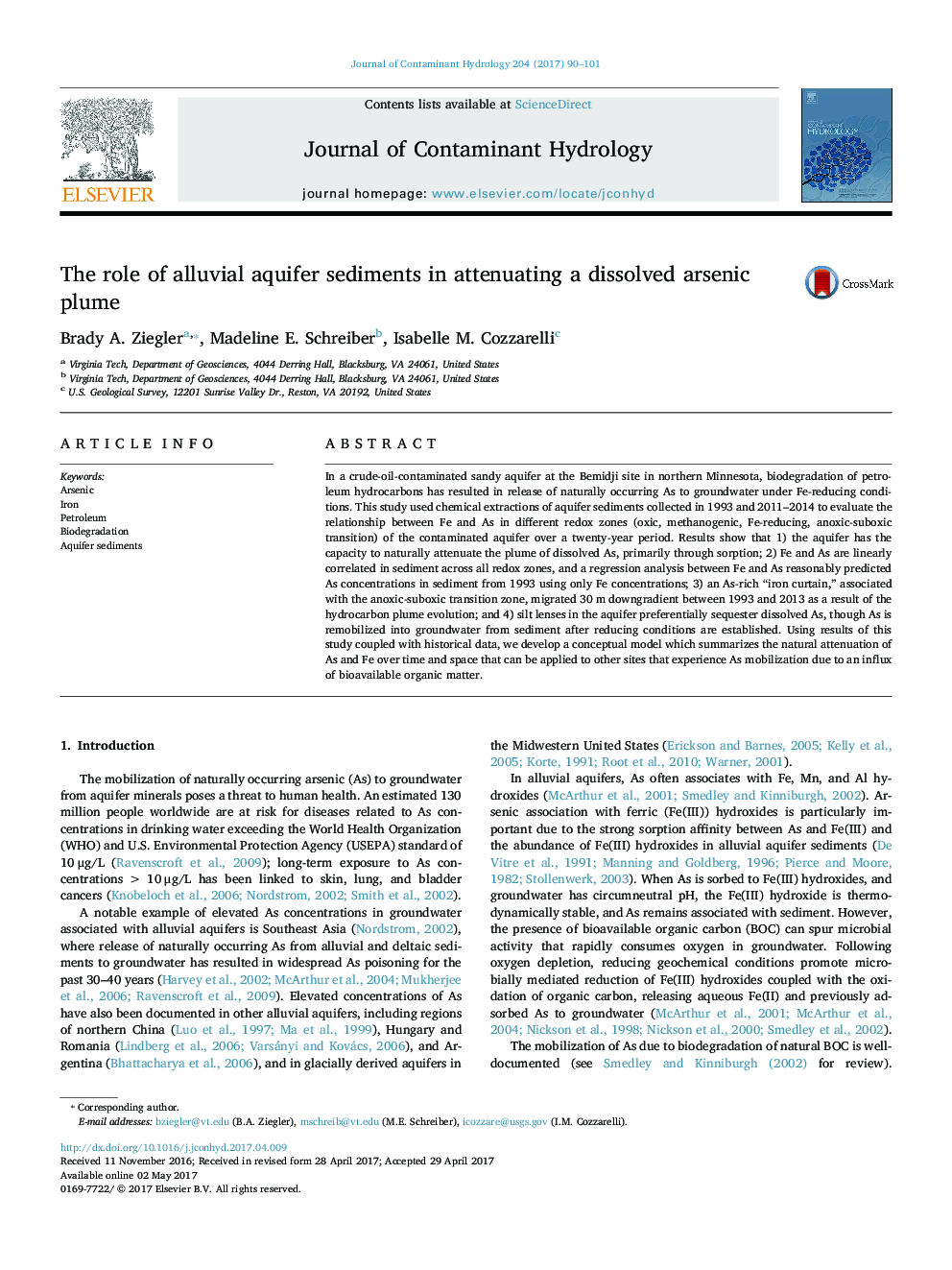| Article ID | Journal | Published Year | Pages | File Type |
|---|---|---|---|---|
| 5765929 | Journal of Contaminant Hydrology | 2017 | 12 Pages |
â¢Natural arsenic in sediment is dissolved due to biodegradation of petroleum.â¢In a petroleum plume, arsenic in groundwater is attenuated by iron in sediment.â¢An iron curtain at leading edge of plume sorb dissolved arsenic from groundwater.â¢Iron concentrations alone reasonably predict arsenic concentrations in the aquifer.
In a crude-oil-contaminated sandy aquifer at the Bemidji site in northern Minnesota, biodegradation of petroleum hydrocarbons has resulted in release of naturally occurring As to groundwater under Fe-reducing conditions. This study used chemical extractions of aquifer sediments collected in 1993 and 2011-2014 to evaluate the relationship between Fe and As in different redox zones (oxic, methanogenic, Fe-reducing, anoxic-suboxic transition) of the contaminated aquifer over a twenty-year period. Results show that 1) the aquifer has the capacity to naturally attenuate the plume of dissolved As, primarily through sorption; 2) Fe and As are linearly correlated in sediment across all redox zones, and a regression analysis between Fe and As reasonably predicted As concentrations in sediment from 1993 using only Fe concentrations; 3) an As-rich “iron curtain,” associated with the anoxic-suboxic transition zone, migrated 30Â m downgradient between 1993 and 2013 as a result of the hydrocarbon plume evolution; and 4) silt lenses in the aquifer preferentially sequester dissolved As, though As is remobilized into groundwater from sediment after reducing conditions are established. Using results of this study coupled with historical data, we develop a conceptual model which summarizes the natural attenuation of As and Fe over time and space that can be applied to other sites that experience As mobilization due to an influx of bioavailable organic matter.
Graphical abstractDownload high-res image (178KB)Download full-size image
